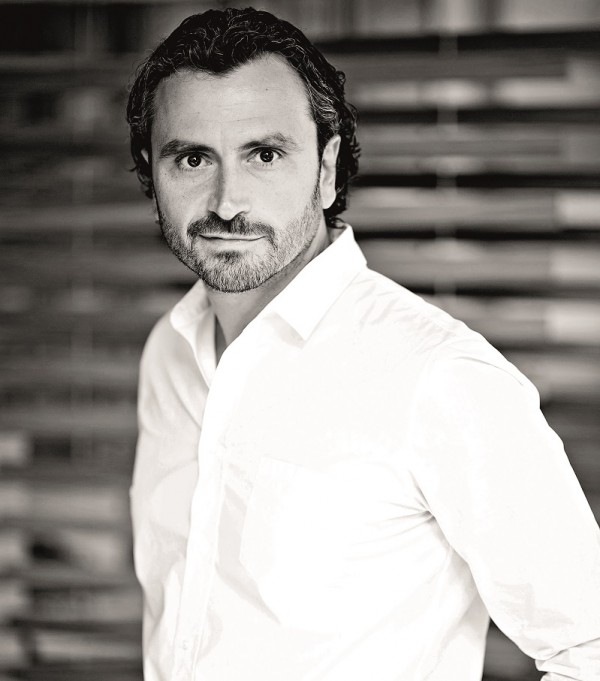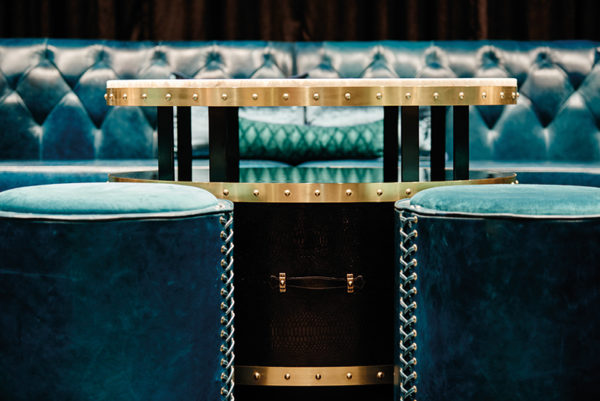Focus: Studio Munge
From Toronto to Hong Kong, Studio Munge’s interiors transport guests and residents into a world of sumptuous luxury.

From Toronto to Hong Kong, Studio Munge’s interiors transport guests and residents into a world of sumptuous luxury.
Design aficionados often talk about how a carefully curated space affects the way you feel. This is certainly the belief of Allesandro Munge, design principal at Studio Munge, a Toronto based firm that specializes in luxury hospitality and residential interiors. “Most of my designs are emotion based,” he says. “Whether the guest enters a restaurant, a hotel lobby or a private residence, the initial burst of emotion is what I’m after.”
Since opening his studio in 1997, Allesandro Munge’s atmospheric interiors have reached an increasingly global clientele. His firm has partnered with Park Hyatt, MGM Resorts, Greenland Group, Wheelock Group and China Land Resources among others, often working on projects across several continents simultaneously.
Whether he’s creating a moody bar in Vancouver or a plush residence Hong Kong, Munge’s spaces are also decidedly upscale. “I will use every design element accessible, from bespoke furniture designs to the most luxurious finishes to translate our narrative and transport people into a world of hedonist luxury,” he says.
Born and raised in Germany to Italian parents, Munge came to design as a child when he began sketching designs for his mother’s drapery business. Later he expanded his visions to incorporate different elements of a room to create a comprehensive space. Professionally, he got his start at Yabu Pushelberg in Toronto where he worked for four years before breaking away with Sai Leung to form his own company. Fast-forward two decades and his firm has become one of Canada’s leading design studios.
Studio Munge is known for an innovative and eclectic approach to high-end interiors where choice materials and furnishings are often combined in playful, unexpected ways. At Taverna Mercatto, an Italian restaurant that recently opened in Toronto, Studio Munge combined barbed wire chandeliers and exposed beams with stained glass windows and reclaimed church pews to achieve a look that is part gothic industrial and part nonna’s living room. At Prohibition, the bar at Vancouver’s legendary Rosewood Hotel Georgia (where Munge’s studio also spearheaded a stylish restoration), Studio Munge created a sleek room with lush drapery and richly upholstered bar stools, a throwback to the age of decadence and glamour that includes an ornate ceiling clad in Macassar Ebosy, a custom glass-and-metal chandelier, an a 3,000 sq. ft. black stone bar.
A keen eye for detail and love of lavishness also characterizes the studio’s prolific hospitality and residential work. (The firm is currently working on over 30 residential projects split between four design teams.) At the Ritz Carlton Residences in Toronto Studio Munge was tasked with creating model suites that exuded the refined elegance for which the brand is known. To convey tasteful sophistication the firm used rich woods like macassar ebony and patterned floors made of marble, limestone and granite. Since future owners would eventually customize their units, Munge concentrated on showing upgrade options such as brushed, satin-nickel hardware, walls custom-lined with wenge-stained oak and leather stitched panels. To add local flair Studio Munge commissioned art pieces from Toronto artists. To contemporize the space they designed a custom two-sided fireplace between the living room and the den.
Finding cohesive solutions for projects that demand a plurality of design languages and functions is not easy. Allesandro Munge attributes his success in part to his extensive world travels. “My extensive travelling is undoubtedly what influences me the most. The contact with foreign culture has had an immeasurable impact on my designs. It allows me to truly understand human nature, the psychology of the mind and what links us all.”
Munge’s world travels became a central principle for another recent residential project, the Bisha Hotel and Residences. One of the developers, Charles Khabouth, was an early nightclub client of Munge’s who loves to travel and collect art and furniture. He wanted Bisha’s interiors to be ‘worldly instead of trendy’, filled with one-of-a-kind pieces that reflect the international inspiration of Studio Munge’s travels around the globe.
The flagship project is the latest private-label boutique hotel and residence brand to emerge in Toronto since the Four Seasons. It comprises a 41 storey tower, designed by Wallman Architects, 100 hotel rooms and over 300 residences that feature nine-foot ceilings, spacious balconies and custom-designed Studio Munge cabinetry.
Entering the building, Bisha’s interiors are meant to reflect the fusion of Toronto’s homegrown poise with an international flair. Studio Munge employed a tantalizing mix of opulent furnishings and textures including glass, wood, stone, gold-hued metals leathers and silks. The lounge features wireframe chairs from Minotti, a French sideboard bar unit from L’Atelier, a custom hide rug from Kyle Bunting and custom wall finish by Toronto’s Applied Arts Studios. At the bar, vintage Parisian wall sconces flank a gold circular fireplace; a glass sculpture by Jeff Goodman hangs from the coffered ceiling.
The opulence is palpable; yet the space is also designed to feel intimate, complete with ‘at home’ comforts. These days Munge says the lines between luxury hospitality and residential project are increasingly blurred. While his luxury hospitality clientele is looking for intimate and curated spaces, “a home away from home”, residential developers are tapping onto the aspirational luxury hotel lifestyle. “They both are merging into a common sophisticated cosmopolitan lifestyle,” he says.
Munge says the biggest change he has experienced is to the actual scope of his design projects. “We’ve outgrown the client/contractor relationship and are now working in a much more symbiotic way with our prestigious clientele and developer partners.” This means the studio will come to the table with a deeper understanding of their client’s business needs, leading to stronger partnerships and more relevant designs both in concept and execution.
But business aside, the driving factor for Munge remains the desire to transport guests through his lavish and evocative spaces. “The beauty of Interior Design is that capacity to transform a human being’s mood and feelings through spatial experience.”
Q & A
You started your company nearly 20 years ago. Have your tastes and design ideals changed since then?
I wouldn’t say my design ideals have changed rather they have matured. As you age, learn more about yourself and become comfortable in your skin. It all starts influencing your aesthetic.
Who are some of your favorite designers?
Many of our designs are inspired by architecture and fashion. I am not sure I can point to one favorite designer but I have always admired designers with a strong vision and sense of direction from the likes of Frank Ghery to Tadao Ando. They have such a great understanding of light and volumes; both artists perfectly materialize the intricate relationship between fluidity and human connectivity.
Do you think Canadian studios are sometimes overlooked when it comes to design?
15 years ago maybe… It’s a different story today. The digital world, ease of travel and communication have turned the industry into a village. Wherever you are based, clients are open to hiring you if you produce quality work. Plus our “conservative Canada” has evolved tremendously, clients are much more inclined to going out of their comfort zone. I mean look at what Canada has produced…from the likes of Frank Ghery to Drake.
In addition to luxury condominiums you also work on private homes. Is there a private residence of which you are particularly proud?
The residential work I am the most proud of is a terraced private home I have been designing for the last four years. It’s one of those beautiful design stories that I cannot wait to share with the world. The architecture is extremely modern and resort like. It is filled with gorgeous Canadian limestone, strong architectural features and sophisticated details.
What would you like to work on next?
I really need to find the time to finish my own residence! It’s been an ongoing project for years, a passion project of mine that requires much more attention that I am able to give right now. Hopefully 2016 will be the year.
Staff Credits
Text by Sophie Kalkreuth
This article was originally published in PALACE.



